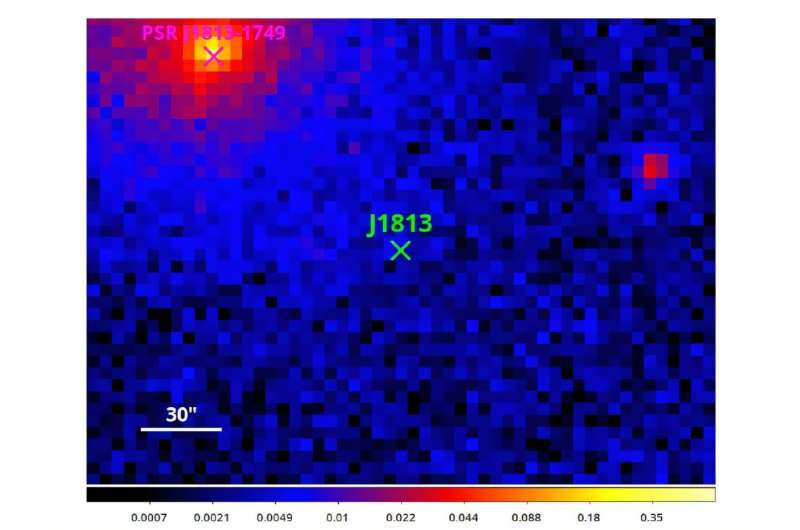
March 13, 2025 by Tomasz Nowakowski , Phys.org
Collected at: https://phys.org/news/2025-03-supergiant-fast-ray-transient.html
Italian astronomers report the detection of a new X-ray binary (XRB), which has received the designation 4XMM J181330.1-17511 (J1813 for short). The newfound object represents the rare subclass of XRBs known as supergiant fast X-ray transients. The discovery is detailed in a research paper published March 6 on the arXiv preprint server.
XRBs are composed of a normal star or a white dwarf transferring mass onto a compact neutron star or a black hole. Based on the mass of the companion star, astronomers divide them into low-mass X-ray binaries (LMXBs) and high-mass X-ray binaries (HMXBs).
The so-called supergiant fast X-ray transients (SFXTs) are HMXBs harboring a compact object accreting part of the clumpy wind of the blue supergiant companion. This produces a series of brief X-ray flares lasting from minutes to over an hour. The first SFXT was discovered in 2005, and to date only about 15 such systems are known.
Given that SFXTs are rarely found, their true nature is still uncertain. Therefore, finding new binaries of this type and investigating them in detail is crucial in order to advance our knowledge about such transients and the whole class of HMXBs in general.
Now, a team of astronomers led by Martino Marelli of the National Institute for Astrophysics in Milan, Italy, has identified the newest addition to the short list of SFXTs. By analyzing the data from various space telescopes, they found that one source showcases properties and behavior consistent with those observed in known SFXTs.
“We report here on an unidentified source, 4XMM J181330.1-175110 (hereafter J1813), whose transient activity was serendipitously detected by XMM-Newton during a long observation and subsequently discovered thanks to the EXTraS project. In this paper, we report on the analysis of the available X-ray and optical/mid-infrared data, leading us to propose an identification with a new high mass X-ray binary, in particular with a supergiant fast X-ray transient,” the researchers wrote in the paper.
J1813 remained undetected during the initial phase of observations when it was in a quiescent state, which was followed by an active phase with several X-ray flares during which it was identified. During the active state, the temporal behavior of J1813 resembled a series of so-called FRED (fast rise, exponential decay) flares with peak luminosities (in the 2-12 keV band) ranging from 10 to 400 decillion erg/s.
The optical-to-mid-infrared spectral energy distribution of J1813 suggests that it harbors an extremely absorbed B-type star with an effective temperature of about 32,000 K, located some 22,800–42,400 light years away. Therefore, the system was classified as an HMXB.
Furthermore, the shape of the X-ray light curve of J1813, the presence of many short flares, and its temporal and spectral properties strongly favor an SFXT classification. The astronomers noted the light curve of J1813 is similar to that observed in the archetypal SFXT IGR J17544-2619.
However, the authors of the paper concluded that optical and near-infrared spectroscopic observations are required in order to confirm the luminosity class of the donor star in J1813 and to reduce the distance uncertainty.
More information: M. Marelli et al, 4XMM J181330.1-175110: a new supergiant fast X-ray transient, arXiv (2025). DOI: 10.48550/arxiv.2503.04009
Journal information: arXiv

Leave a Reply